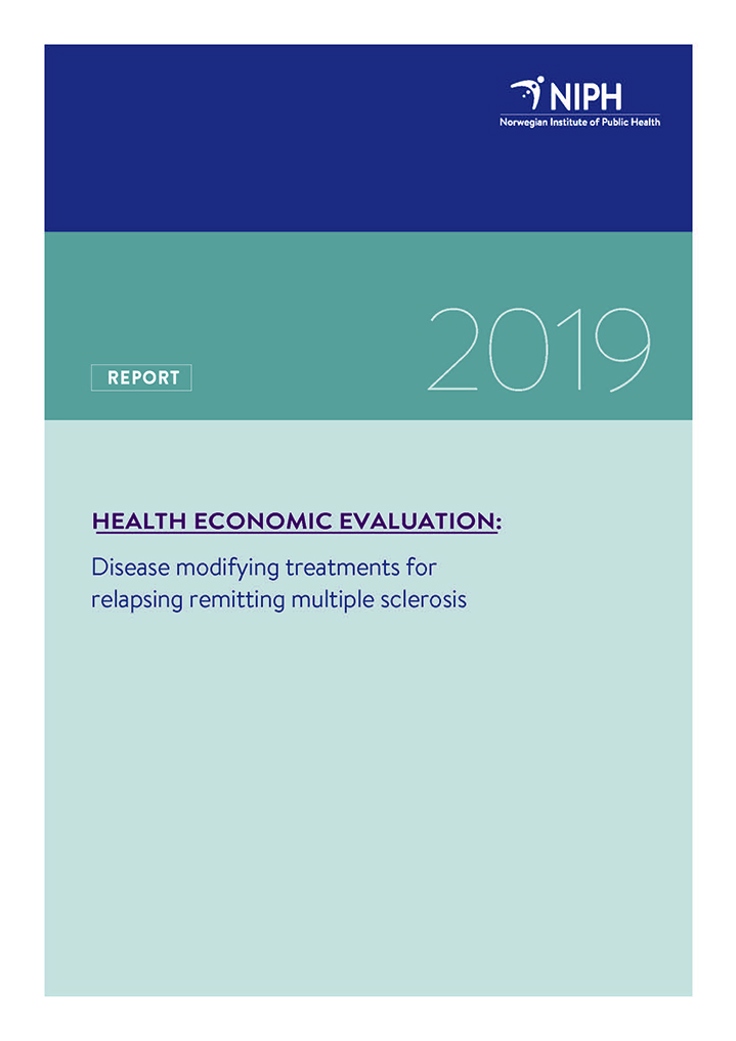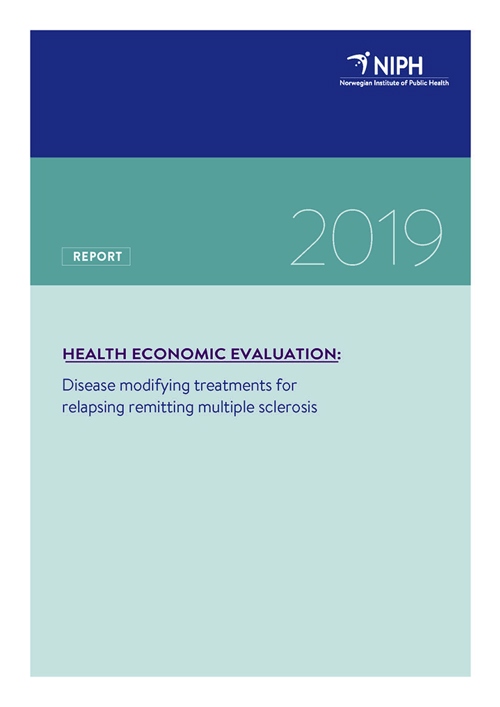Disease modifying treatments for relapsing remitting multiple sclerosis. A health economic evaluation
Health technology assessment
|Published
This is a health economic evaluation of disease modifying treatments for relapsing remitting multiple sclerosis. The report assesses the included drugs in light of the Norwegian priority setting criteria.
Key message
The Norwegian Institute of Public health has previously assessed the efficacy, safety and cost effectiveness of drugs for relapsing remitting multiple sclerosis. In this report, three new drugs (cladribine, ocrelizumab and rituximab) are included. Effectiveness, safety and legal aspects are reported in a separate publication, as is ethical considerations. This report assesses the included drugs in light of the Norwegian priority setting criteria (benefit, resource use and disease severity).
- Relapsing remitting multiple sclerosis is a very severe disease, with an estimated absolute shortfall of 32 undiscounted quality adjusted life years (QALYs).
- In terms of health benefits, ocrelizumab is the treatment alternative that generates most health benefits (QALYs), while glatiramer acetate (40mg) generates the least.
- Ranked according to decreasing health benefits, ocrelizumab, alemtuzumab, natalizumab, rituximab, dimethyl fumerate, fingolimod, cladribine, teriflunomide, glatiramer acetate (20 mg) og glatiramer acetate (40mg) generate respectively 8.29, 8.27, 8.15, 8.14, 8.11, 7.95, 7.92, 7.79, 7.65 and 7.36 discounted QALYs.
- Some of the differences between the treatments are large compared to what is common in other disease areas.
- In terms of resource use over a 20 year time period, applying a broad healthcare perspective, natalizumab generates most costs and rituximab least costs based on net prices.
- Ranked by increasing cost, rituximab, cladribine, alemtuzumab, glatiramer acetate (20 mg), teriflunomide, glatiramer acetate (40mg), dimethyl fumerate, ocrelizumab, fingolimod and natalizumab generate respectively discounted NOK ████████████████████████████████████████████ and ██████████████████████ based on net prices.
- Rituximab is more effective and less costly than cladribine (i.e. a dominant treatment strategy). Compared to alemtuzumab, rituximab is less effective, but also less costly.
Ocrelizumab generates more health and more cost than cladribine, alemtuzumab and rituximab. Whether or not ocrelizumab can be considered a cost effective alternative, depend on assumed threshold value for cost effectiveness.

